|
| A |
 | Usage: as
double compartment 'a' used throughout. |  | Usage: and
occasionally the two compartments are not closed. |
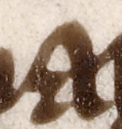 | Usage: may | | |
|
| D |
 | Usage: and
looped 'd' used throughout. |  | Usage: done
the lower lobe of 'd' is generally rounded. |
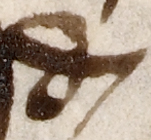 | Usage: qd
'd' with vertical descending tag after 'quod' abbreviation. | | |
|
| G |
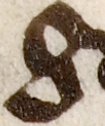 | Usage: goode
double compartment 'g' is the usual graph. The lower compartment is generally triangular. | 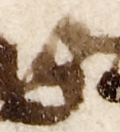 | Usage: þinge |
 | Usage: wight |  | Usage: kynges
a current form of graph shaped like a letter 's' with two hairline strokes to close the compartments. |
|
| H |
 | Usage: haþe
the stem of 'h' often has a backward slant. | 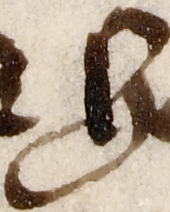 | Usage: holde(n)
the scribe frequently loops the tail-stroke of 'h' round to connect back with the body of the letter. |
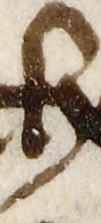 | Usage: muchel | 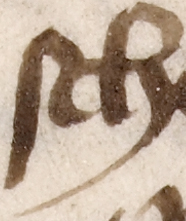 | Usage: schewede
the tail-stroke frequently curves down below several letters. |
|
| R |
 | Usage: conferme
long 'r' is used in all positions except after 'o'. The fork of the letter is usually set high, above the level of the lower part of surrounding letters. |  | Usage: power
'r' in final position with flourish. |
 | Usage: for
'z'-shaped 'r' is used after 'o'. | | |
|
| S |
 | Usage: as
sigma 's' is only used in final position. |  | Usage: þinges
8-shaped 's' is also only used in final position. |
 | Usage: is
long 's' is used in every position even, as here, as the final letter of a word. This is a distinctive feature of this scribe's hand. | | |
|
| W |
 | Usage: knowen
the left limb of 'w' is often separate from the rest of the graph. |  | Usage: wole
a curled approach stroke to 'w' as the initial letter of a word. |
 | Usage: wiȝt
'w' is frequently formed with the second arm of the letter lower than the first. |  | Usage: worlde
although the ink is much more degraded on this folio, the basic form of 'w' is the same. |
|
| Y |
 | Usage: yuel
in initial position the vertical left arm of 'y' stands well above the right. The angle of return on the tail is more or less the same in all three examples. |  | Usage: openly |
 | Usage: myȝty
the tail of 'y' frequently connects with the following letter. | | |
|
| Thorn |
 | Usage: strenkeþes
thorn is used for 'th' in every conceivable position. It is used in all the usual combinations for definite articles and demonstratives as well as in verbs and to replace 'th' whenever needed. |  | Usage: þanne |
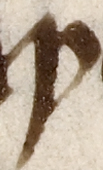 | Usage: haþe |  | Usage: þ(er)offe |
|
| Yogh |
 | Usage: ȝif
yogh is also used frequently. It represents the sounds of both 'y' and 'gh'. |  | Usage: wiȝt
here the 'i' is followed closely by yogh. |
 | Usage: nouȝt |  | Usage: myȝt |
|
| I |
 | Usage: I
the regularly formed upper case 'I'. There is usually a punctus on either side to distinguish it. It is a distinctive letter form in this scribe's hand. |  | Usage: I |
 | Usage: I | 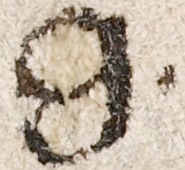 | Usage: I
upper case 'I' as two closed loops to the left of a stem. |
|
| Abbreviative Marks |
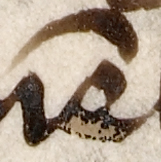 | Usage: reme(m)br(e)
the scribe frequently uses macrons to replace 'n's and 'm's. |  | Usage: ma(n)
here the scribe uses a flourish to replace the 'n'. |
 | Usage: gete(n) |  | Usage: sente(n)ce
|













































